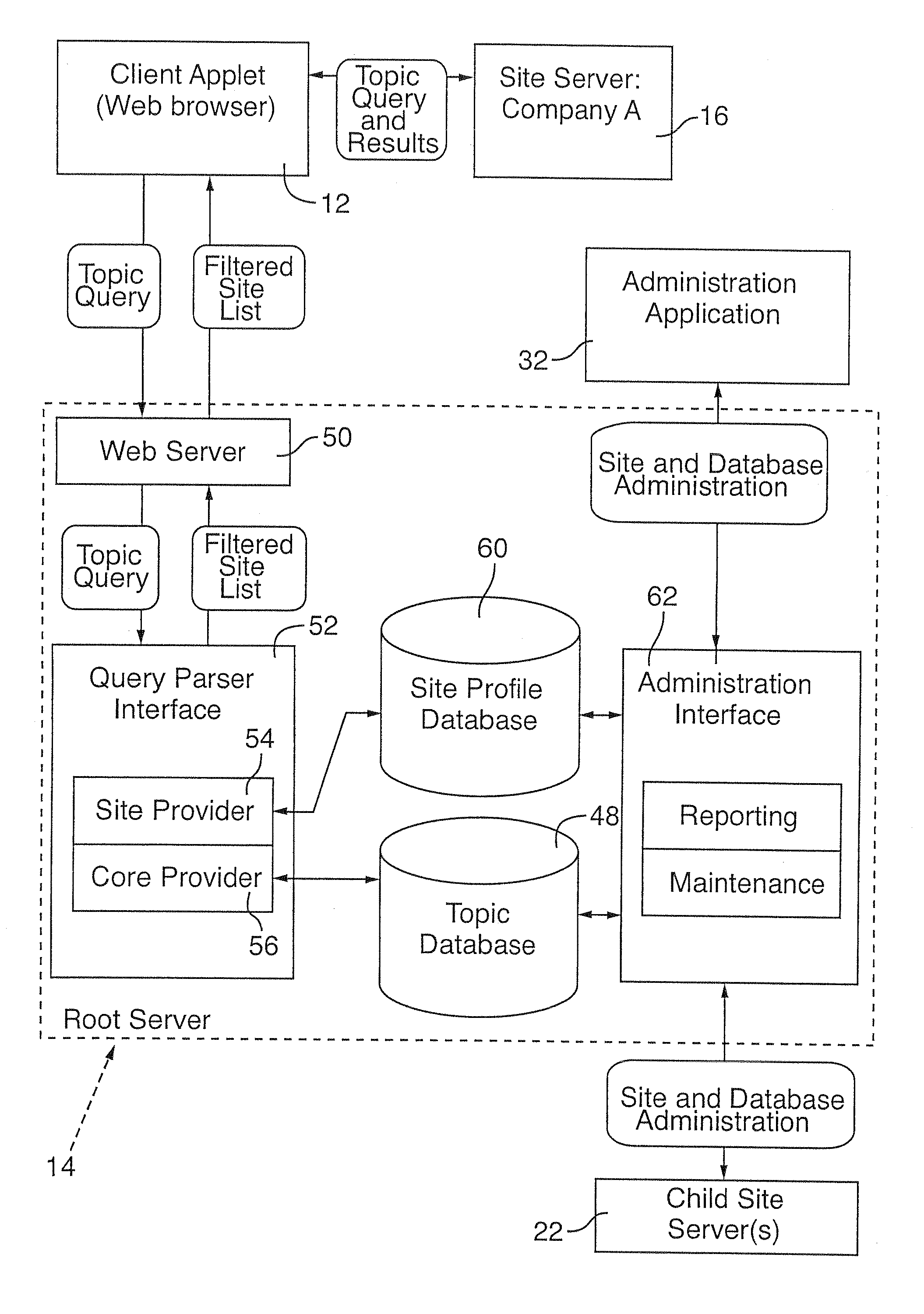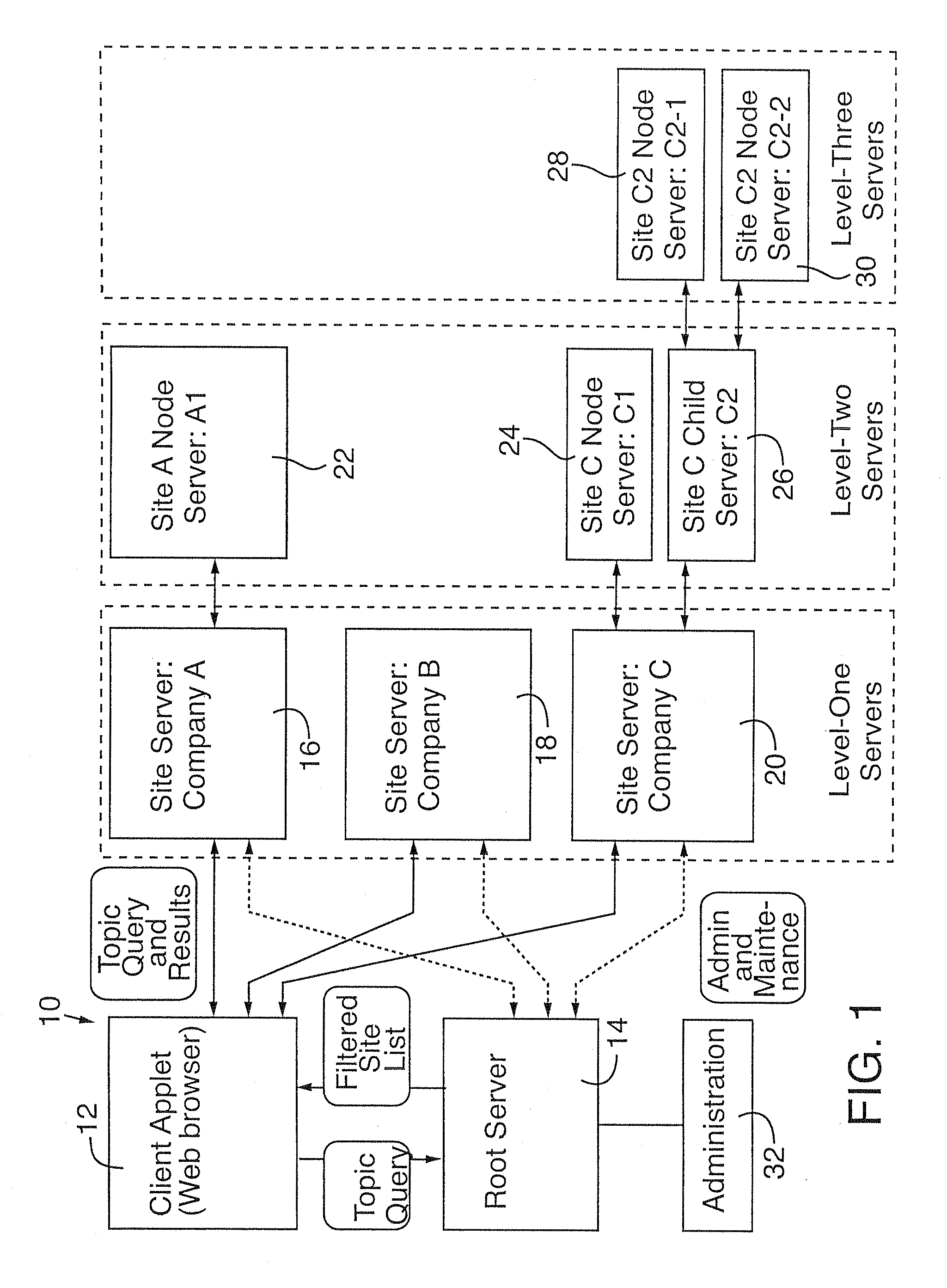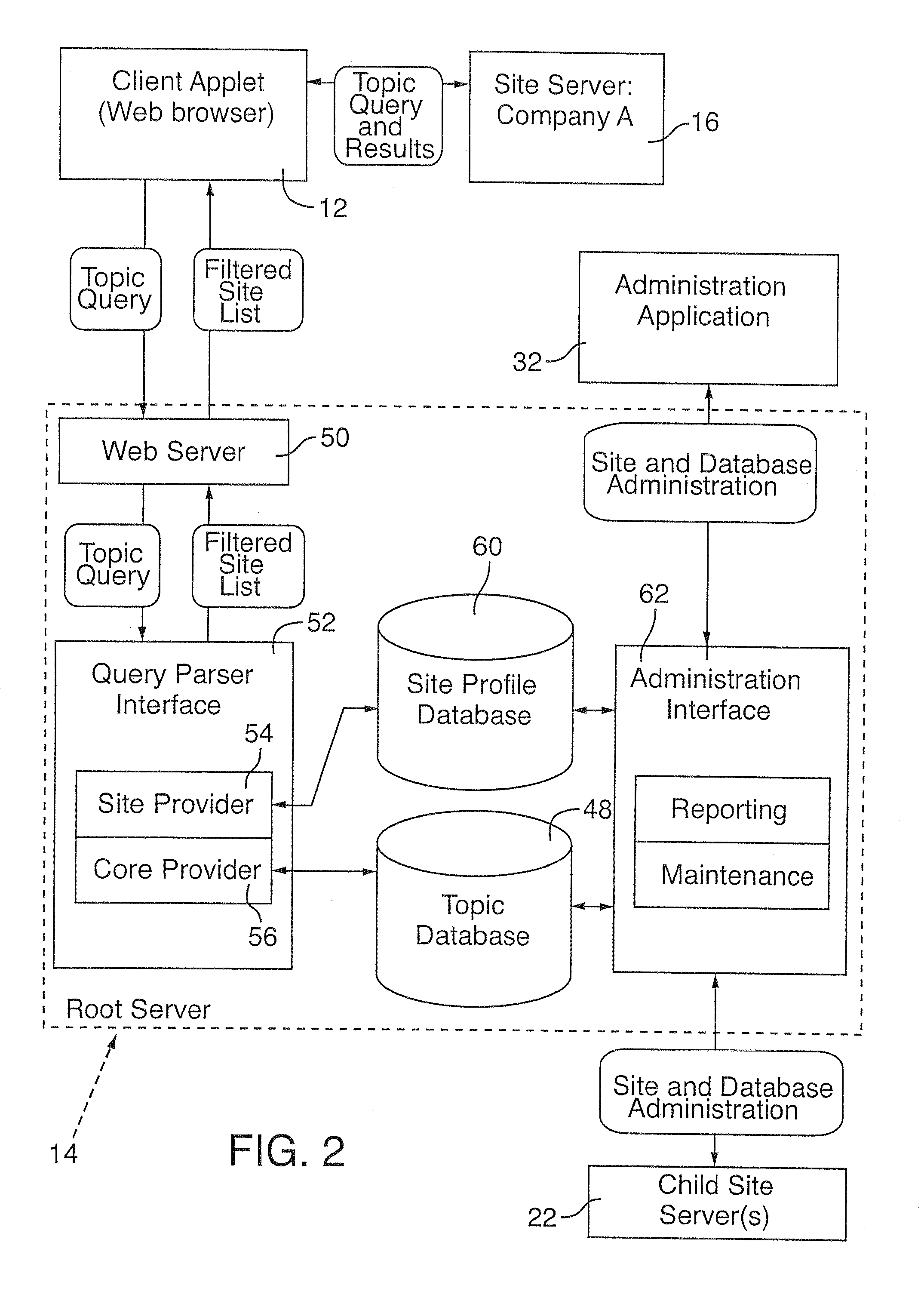Distributed globally accessible information network implemented to maintain universal accessibility
a global accessible, information network technology, applied in the field of distributed search architecture, can solve the problems of unstructured victimization of the global accessible computer network known as the internet, affecting the quality of information available, and reducing the utility of internet information usage, so as to eliminate bias, eliminate redundant network traffic and data processing, and eliminate potential bottlenecks
- Summary
- Abstract
- Description
- Claims
- Application Information
AI Technical Summary
Benefits of technology
Problems solved by technology
Method used
Image
Examples
Embodiment Construction
[0037]FIG. 1 is a block diagram of an example of a distributed application network 10 configured in accordance with the disclosure and showing information flow paths in response to a particular end user request. An application network is a collection of servers that participate in a particular application of the disclosed distributed information network. Examples of an application network include an e-commerce network, an information portal, or a peer to peer (P2P) network. Network 10 is a hierarchical system of distributed servers that store network content and communicate with other servers in the network. The hierarchical system is one in which a server can have any number of child servers, each of which can have any number of its own child servers, with an unlimited number of successive levels of dependent servers possible. This structure helps distribute the storage of content and the processing load on the network. FIGS. 2-4 show in greater detail the internal structures of, r...
PUM
 Login to View More
Login to View More Abstract
Description
Claims
Application Information
 Login to View More
Login to View More - R&D
- Intellectual Property
- Life Sciences
- Materials
- Tech Scout
- Unparalleled Data Quality
- Higher Quality Content
- 60% Fewer Hallucinations
Browse by: Latest US Patents, China's latest patents, Technical Efficacy Thesaurus, Application Domain, Technology Topic, Popular Technical Reports.
© 2025 PatSnap. All rights reserved.Legal|Privacy policy|Modern Slavery Act Transparency Statement|Sitemap|About US| Contact US: help@patsnap.com



